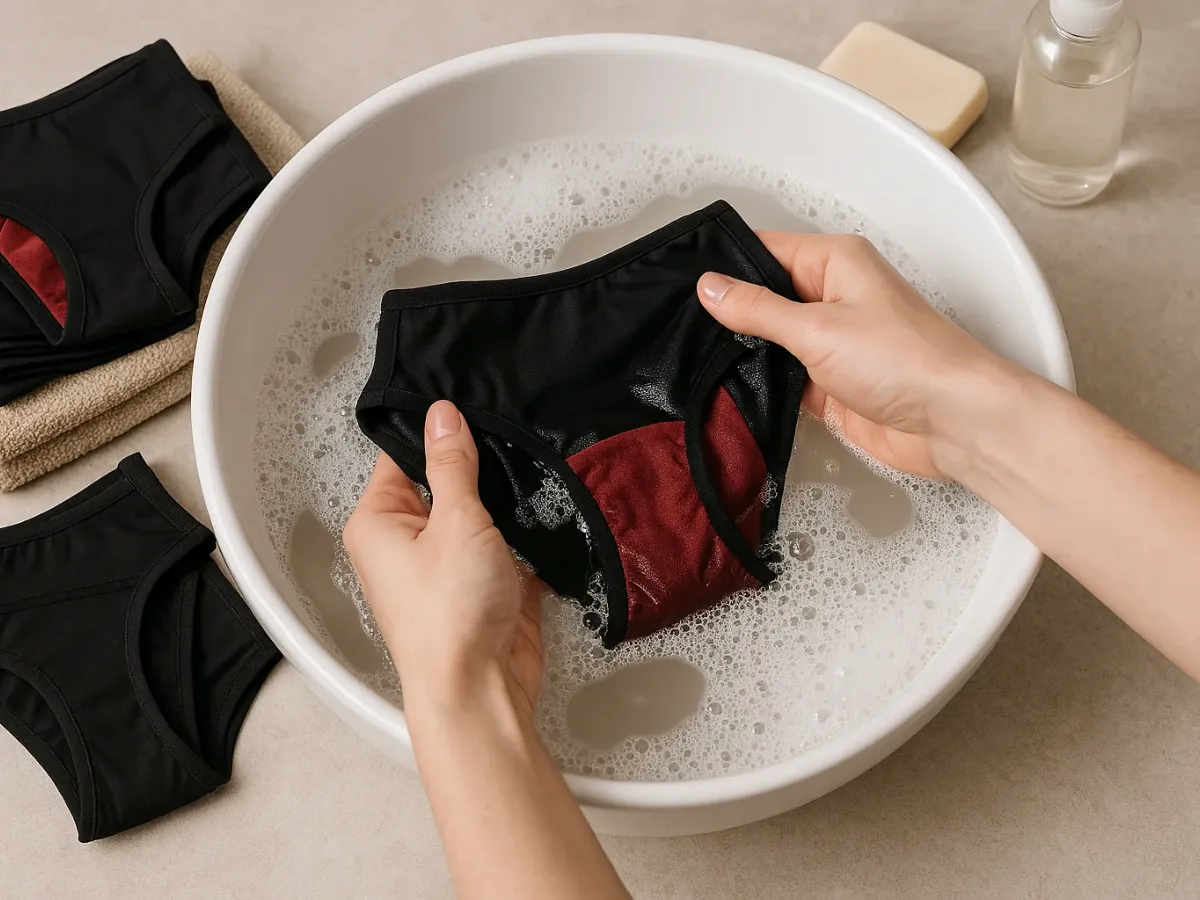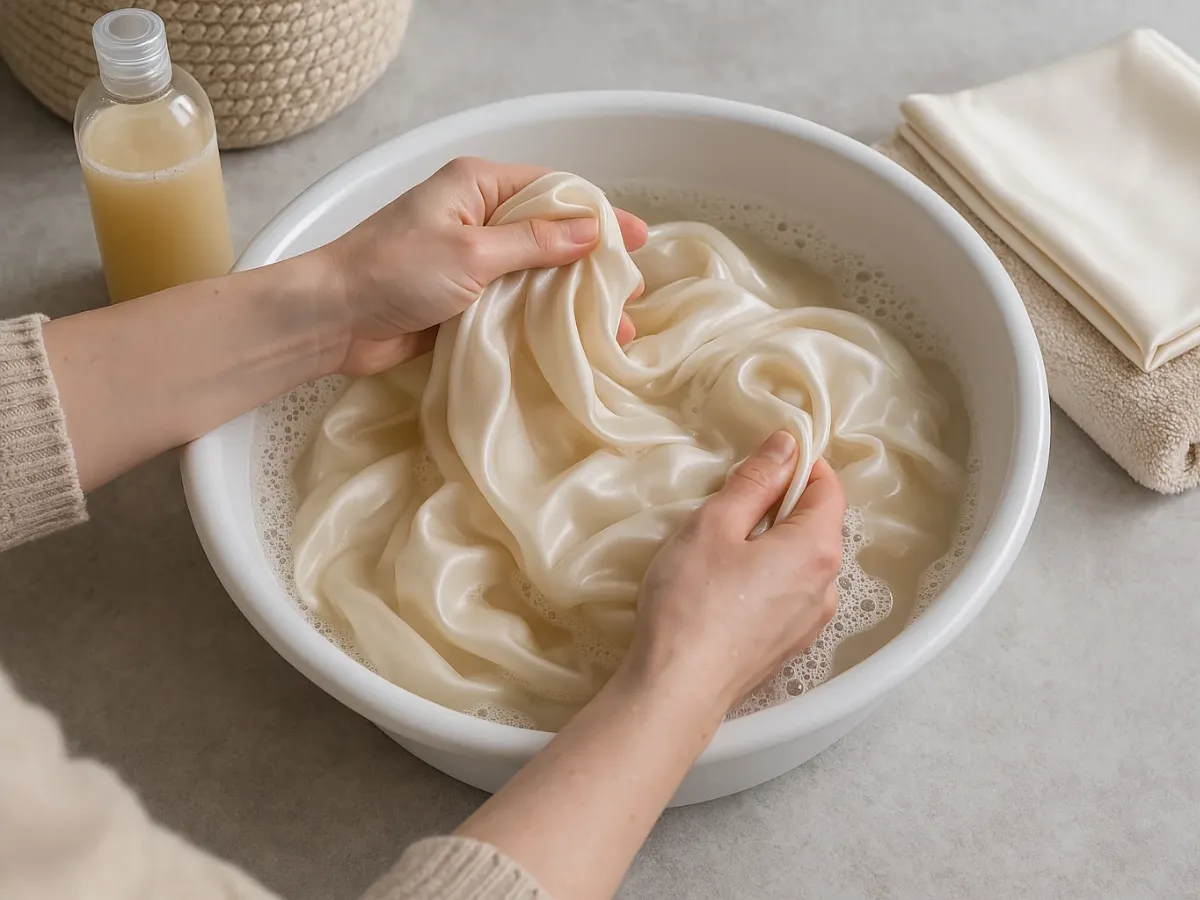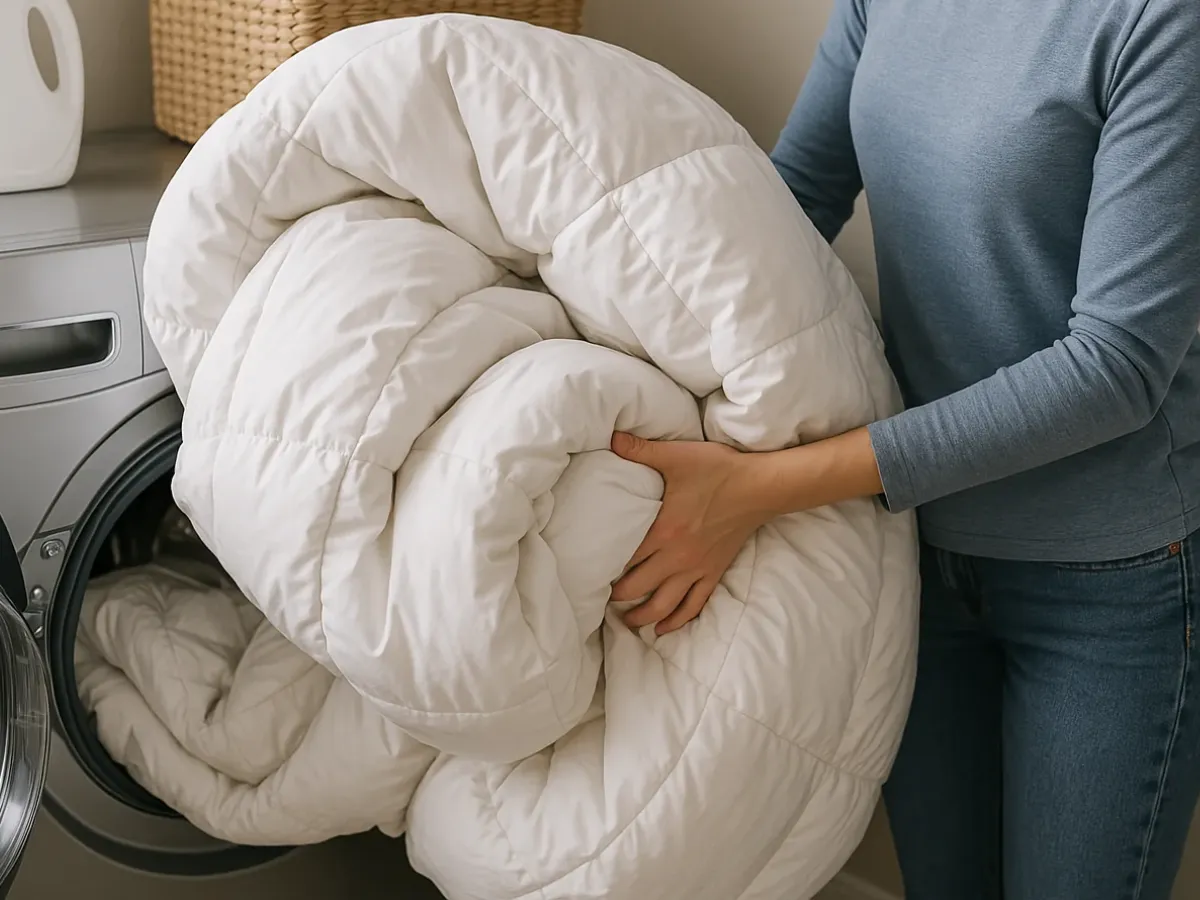How to Wash Menstrual Underwear Correctly: Step-by-Step Guide

Menstrual underwear has revolutionized how many people experience their cycle, offering a comfortable, sustainable, and effective alternative to disposable products like pads and tampons. However, as reusable garments with specific technology, a fundamental question arises: how to wash menstrual underwear correctly? Improper washing can not only reduce their absorbency and lifespan but also compromise hygiene.
If you've just started using them or simply want to ensure you're caring for them properly, you're in the right place! In this complete guide, we'll explain the ideal washing process step-by-step, which products to use (and which to avoid at all costs), and how to dry them to keep them in perfect condition for a long time.
Understanding the Technology: What Are They Made Of?
To wash them well, it helps to know how they work. Menstrual underwear isn't regular underwear. It incorporates several layers of technical fabrics with specific functions:
- Top Layer (Skin Contact): Usually organic cotton or soft, breathable fabrics for comfort. Its function is to quickly wick moisture away.
- Absorbent Layer(s): The core of the underwear. Made from technical materials (often blends of natural and synthetic fibers) designed to absorb and retain menstrual flow, keeping you dry. May have antibacterial properties to neutralize odors.
- Waterproof Layer (PUL): A thin layer of Polyurethane Laminate (PUL) or similar material that acts as a barrier to prevent leaks and stains on outer clothing. It's breathable but liquid-impermeable.
- Outer Fabric: The visible part of the underwear, typically cotton, lycra, modal, or other comfortable and aesthetic fabrics.
The goal of washing is to thoroughly clean the absorbent layers and eliminate bacteria, without damaging the waterproof layer or clogging the pores of the technical fabrics.
Step 1 ESSENTIAL: Immediate Rinse with COLD Water
This is the most important step and one you should never skip. As soon as you take off the used menstrual underwear, rinse it with plenty of COLD water.
- Why Cold?: Hot water sets blood proteins into the fibers, creating permanent stains. Cold water, on the other hand, helps dissolve and easily remove blood.
- The Process: Place the underwear under the cold tap and let water run over it, especially the absorbent gusset area. You can gently squeeze it (like a sponge) under the stream to help flush out the flow.
- Until When?: Keep rinsing until the water runs mostly clear. Don't worry if it's not 100% clean; the subsequent wash will take care of the rest.
- What if I can't rinse right away?: If you're out, fold it onto itself and store it in a waterproof pouch (many brands sell them). Rinse it as soon as you get home. Don't leave it dirty and dry for days, as it will be harder to wash and can develop odors.
This initial rinse removes most of the flow and prevents stains and odors.
Step 2: Washing (Hand or Machine, But Carefully!)
Once rinsed, you can wash them by hand or machine.
Option A: Hand Washing (Most Recommended and Gentle)
- Prepare Water and Soap: Fill a sink or basin with cold or lukewarm water (maximum 30°C / 86°F).
- Choose the Right Soap: Use a neutral or mild soap. Ideally, look for one without strong perfumes, oils, excessive glycerin, and, of course, no bleach or fabric softener. Pure Marseille soap, coconut soap, or a liquid detergent specific for delicates or baby clothes usually work well.
- Wash Gently: Submerge the rinsed underwear and rub it gently with your hands, paying a bit more attention to the absorbent area, but without scrubbing aggressively to avoid damaging the technical fibers.
- Final Rinse: Rinse very, very well with cold water until absolutely no soap residue remains. Soap buildup can coat the fibers and reduce absorption.
Option B: Machine Washing (Convenient but with Precautions)
If you prefer the washing machine (and the label on your underwear allows it):
- Wash Bag: Essential! Put the rinsed menstrual underwear inside a mesh lingerie bag. This protects them from snags, excessive friction, and deformation.
- Suitable Company: You can wash them alone or with other delicate items (regular underwear, similar colored garments). Avoid washing with heavy items (jeans, towels) or lint-shedding items. Don't overload the washer.
- Detergent: Use a mild, neutral liquid detergent, without bleach or fabric softener. Use the same amount you would normally use for a delicate load.
- Cycle: DELICATE. Select the gentlest cycle: "Delicate," "Hand Wash," "Lingerie."
- Temperature: COLD or MAXIMUM 30°C (86°F)! Crucial for protecting the waterproof layer and technical fibers.
- Spin Cycle: LOW or NO SPIN. A high spin can damage fabrics and elastics. Opt for the lowest speed (max 600-800 rpm) or turn it off if possible.
- Extra Rinse: If your machine allows, add an extra rinse to ensure complete detergent removal.
Although you can wash them with other clothes, remember the guidelines for dark clothes or white clothes if mixing.

Step 3: Drying (AIR DRY is Key!)
This step is as important as washing for maintaining the functionality of your menstrual underwear.
- NEVER DRYER!: The intense heat of the dryer irreversibly damages the waterproof layer (PUL), causing it to lose its function and leading to leaks. It also deteriorates elastics and absorbent fibers.
- NO IRONING!: For the same reason, direct heat from an iron would destroy the technical layers.
- NO Radiators or Heat Sources!: Avoid drying them directly on radiators or near heaters.
- The ONLY Safe Option: AIR DRYING.
- How to Hang: Hang them on a regular drying rack, either indoors or outdoors. You can hang them like regular underwear.
- Direct Sun (Moderately): Although sun has a disinfecting effect, prolonged direct exposure can eventually degrade colors and elastics. It's preferable to dry them in the shade or a well-ventilated place if outdoors. If drying indoors, ensure good air circulation.
- Drying Time: They may take slightly longer to dry than conventional underwear due to their absorbent layers. Ensure they are COMPLETELY DRY before storing, especially the gusset area, to prevent odors or mold.
Handling Persistent Stains and Odors
- Stains: If you follow the immediate cold water rinse rule, blood stains are rare. If a mark remains:
- Soak the (already clean) underwear in cold water for a few hours.
- Gently rub the stain with the same neutral soap used for washing.
- For very stubborn stains on the top layer (if light-colored), you could try applying a tiny amount of very diluted hydrogen peroxide or a baking soda paste, but do so very carefully and test on an inconspicuous area first. See our guide on removing blood stains.
- Odors: If you notice persistent odors even after washing, it could be due to:
- Soap residue: Ensure EXCELLENT rinsing.
- Incomplete drying: Check they are 100% dry before storing.
- Buildup/Bacteria: You can try an occasional soak (not every wash) in cold water with a good splash of white vinegar for 1-2 hours before the normal wash. Vinegar helps neutralize odors and has antibacterial properties. Rinse very well afterwards.
If odor is a recurring issue, also review our tips for removing bad smell from towels.
Frequently Asked Questions about Washing Menstrual Underwear
How to wash period panties?
Rinse well with cold water. Wash by hand or machine (delicate, cold, mesh bag) with neutral soap. Air dry.
How to wash menstrual underwear?
Same as period panties: cold rinse, gentle wash (hand/delicate machine), air dry. Avoid heat, bleach, softener.
How to wash clothes with period stains?
If it's menstrual underwear, follow the steps above. If it's regular clothes stained with blood, rinse with cold and treat the stain specifically (see blood stain article).
Washing your menstrual underwear is simple if you follow these guidelines. Remember: immediate cold rinse, gentle wash with neutral products, and air drying are the keys to keeping them hygienic, absorbent, and in perfect condition for a long time. Take good care of them, and they'll take good care of you!
Guaranteed Delicate Wash? Trust LaColada!
If you prefer to machine wash your menstrual underwear but don't trust your home machine or want to ensure extra gentle treatment, come to LaColada Self-Service Laundry Ponferrada! Our washing machines have specific programs for delicates, use temperature-controlled water, and guarantee optimal rinsing. Remember to bring your mesh bag and use our delicate cycle for professional care.
Care for Your Delicates at LaColada!
Sebastián R.
More than 10 years at the helm of Lacolada Lavanderia Autoserivico Ponferrada and repairing industrial and domestic machinery in my spare time. You won't find unverified theories from the internet here, just real solutions tested by someone who gets their hands dirty every day.
Guides for Other Special Garments

How to Wash Silk Without Ruining It: Complete Guide
Essential care for washing silk garments by hand or machine.

How to Wash Down (Jackets, Duvets) Without Clumping
Maintain the loft and insulating capacity of your down items.

How to Wash Raincoats and Maintain Their Protection
Preserve the functionality of your technical garments and raincoats.